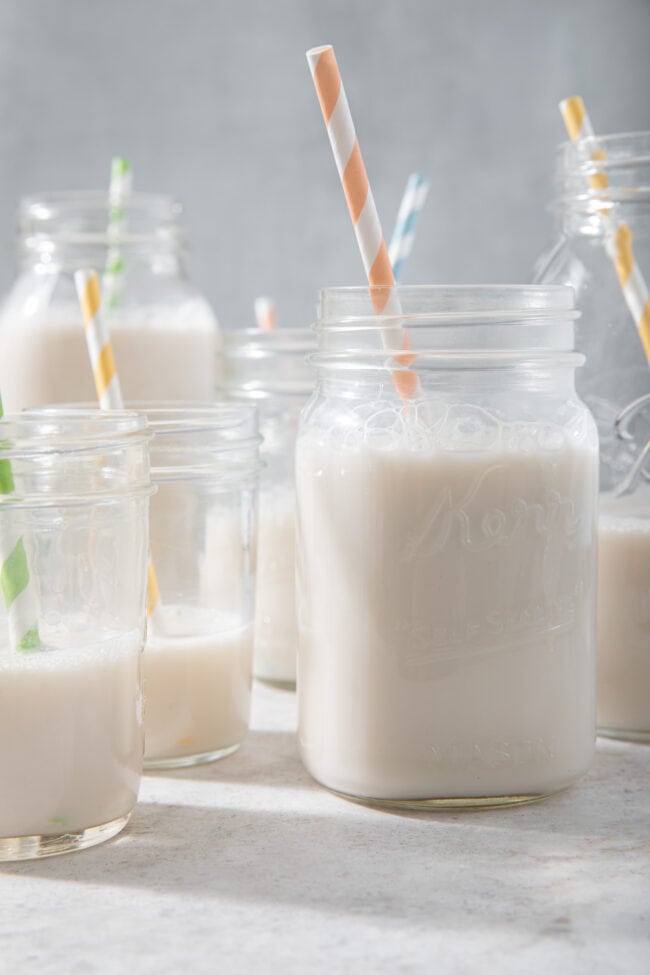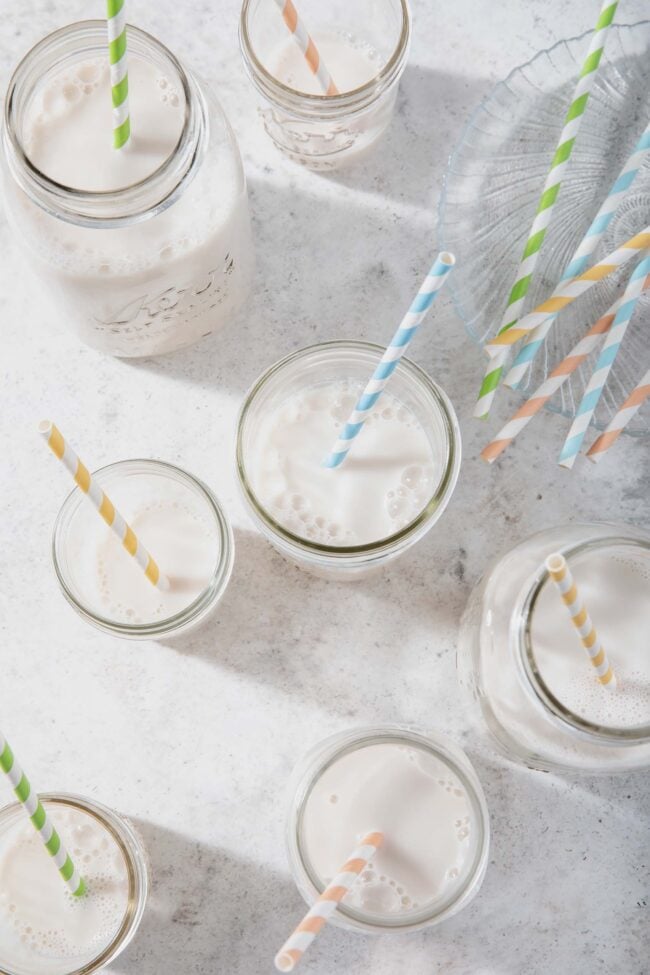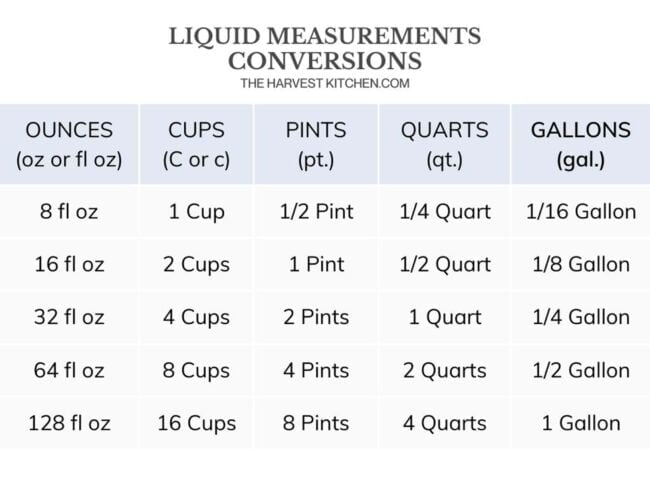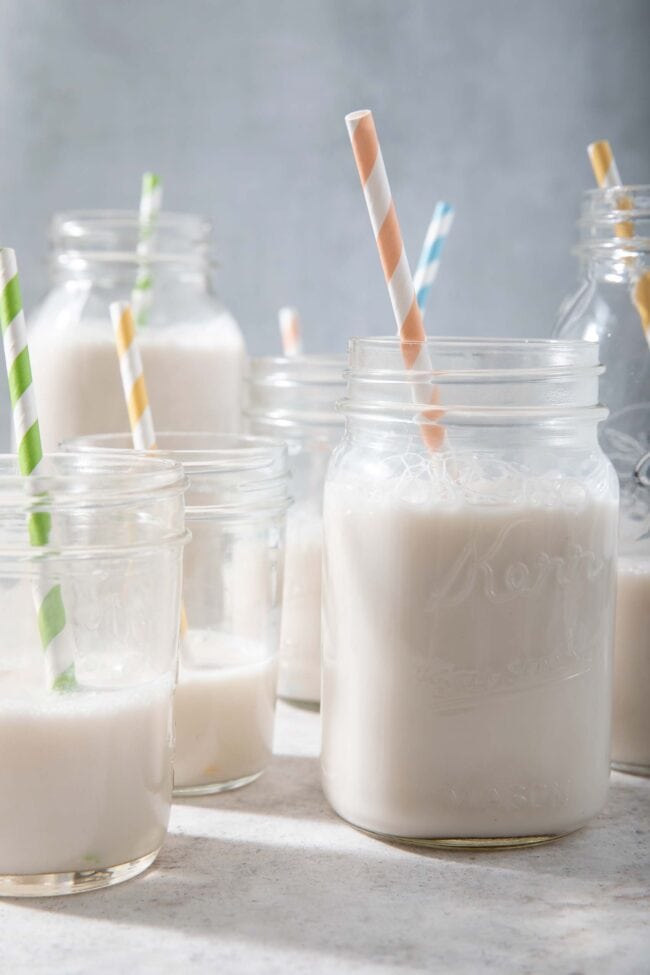How Many Ounces in a Quart
Here’s everything you need to know about how to convert ounces to quarts or quarts to ounce (oz to qt or qt to oz), how many ounces in a quart, what is a quart and what is an ounce. And what’s the difference between fluid ounces and dry (fl oz vs oz)? I’ve also provided you with an easy conversion chart below to help you memorize these conversions.

Being successful in the kitchen requires the accurate measurement of ingredients. When following recipes to make a meal, you might be able to eyeball the amount of herbs and spices and other simple ingredients, but if you add too much or too little of an ingredient, the outcome of your recipe might not be what you had hoped for. Knowing how many ounces in a quart (oz to qt) is a helpful liquid measurement conversion to have memorized for achieving success in the kitchen.
What is an Ounce
This is a unit of weight and the word “ounce” comes from the Latin word “unica” meaning “one-twelfth”. This is also where we got the word inch from.
The word “ounce” was abbreviated as “oz” back in the 1500s, and the abbreviation comes from the Italian word “onza”, which means “ounce”
An ounce is a unit that is used to measure the “weight” of something (like flour and sugar).
What is a Fluid Ounce
- 1 Fluid Ounce (US Customary) = 0.03125 Fluid Quart (US Customary)
- 1 Fluid Ounce (US Customary) = 0.0268552188 Dry Quart (US Customary)
- 1 Fluid Ounce (Imperial) = 0.025 Quart (Imperial)
Wet vs Dry
Wet and dry ingredients have different densities (solids are more dense than liquids) so they need to be measured differently. When cooking, remember to keep in mind that there are different types of ounces – fluid ounces (fl oz) and dry ounces (oz). If your recipe calls for your ingredients in measurements in ounces or pounds (such as flour, chocolate chips or nuts), you would need to use a kitchen scale to measure the exact weight of the ingredient. When measuring liquid ingredients, you’ll need to use a liquid measuring cup.
- A “fluid ounce” (fl. oz.) is used to measure “volume” of liquids (like milk and water)
- An “ounce” (oz) is a unit that is used to measure “weight” (like flour and sugar).
What is a Quart
The U.S. Liquid Quart (qt) is a measurement used to measure volume or how much liquid a container can hold. A quart is a unit of volume equal to a “quarter gallon”. Just as you need to have 4 quarters to equal one dollar, you also need 4 quarts to equal 1 gallon. The word quart comes from the Latin word Quartus which means “one-quarter”, and in liquid measurements this means 1/4 gallon.
A quart is also divided into 2 pints and 4 cups.
How Many Ounces Are In A Quart (oz to qt or qt to oz)
It’s helpful to know some simple kitchen conversions when you’re needing to adjust a recipe whether its to double it or cut the amount in half. Knowing these simple conversions will help you adjust measurements in a recipe so you can achieve the desired serving size.
These are some basic U.S. liquid measurement conversions that are good know, especially if you spend a lot of time in the kitchen.
In the United States, 32 ounces equals one quart.
- 1 Quart = 32 ounces
- 1/2 Quart = 16 ounces
- 1/4 Quart = 8 Ounces
Imperial (US) System vs Metric System
The United States still uses the Imperial System for measurements, where most countries like the United Kingdom, Australia, Canada have adopted the metric system using measurements like grams, meters, liters, kilograms and kilometers. There aren’t significant differences in volume between the Imperial (US) and Metric measuring systems. You can easily use US teaspoons and tablespoons for metric measurements if a recipe is written using the Metric system. The Imperial system of units was developed and used in the United Kingdom around 1826.
For the most part, the Metric System has replaced the imperial system in countries who once used it. The United States is one of the few countries in the world who has yet to switch to the Metric System of measurements.
The US Customary System
The United States Customary System (U.S. Customary System) is a system of weights and measures used in the United States and some other countries. This system includes units for measuring length (inches, feet, yards and miles), weight (ounce, pound, ton), and capacity (teaspoons, tablespoon, cups, pints, quarts, gallons).
The US Customary System was developed and used in the United States after the American Revolution. It is the primary system of units used in the United States.
Measuring Liquid and Dry Ingredients
Accurate measurements are an important part to successful cooking and baking. If dry ingredients are listed as ounces or pounds in your recipe, this is a unit of weight and you would use your digital kitchen scale to measure the ingredients. If fluid ounces are listed in your recipe, you would use a liquid measuring cup. Dry ingredients such as flour, sugar, oats, rice, chocolate chips and nuts would all be listed by weight (ounces or pounds), while milk, oil, water, broth would all be measured by fluid ounces (volume).
Dry Ingredients – If your recipe calls for your ingredients in measurements (in ounces or pounds) such as flour, chocolate chips or nuts, you would need to use a digital kitchen scale to measure the exact weight of the ingredient.
To measure ingredients by weight, place a measuring cup or mixing bowl on top of your digital scale and hit the “zero” or “tare” button. This will take into account the weight of the bow and set the scale counter back to zero. Then just add your ingredient (flour, sugar, etc) into the bowl to measure the accurate amount called for in your recipe.
Liquid Ingredients – Liquid measuring cups are used to measure liquid ingredients like olive oil, milk and broth. To measure liquid ingredients, you would place your liquid measuring cup on a flat surface and pour the liquid even with the measuring line. Squat down to eye level to make sure your measurement is precise.




